
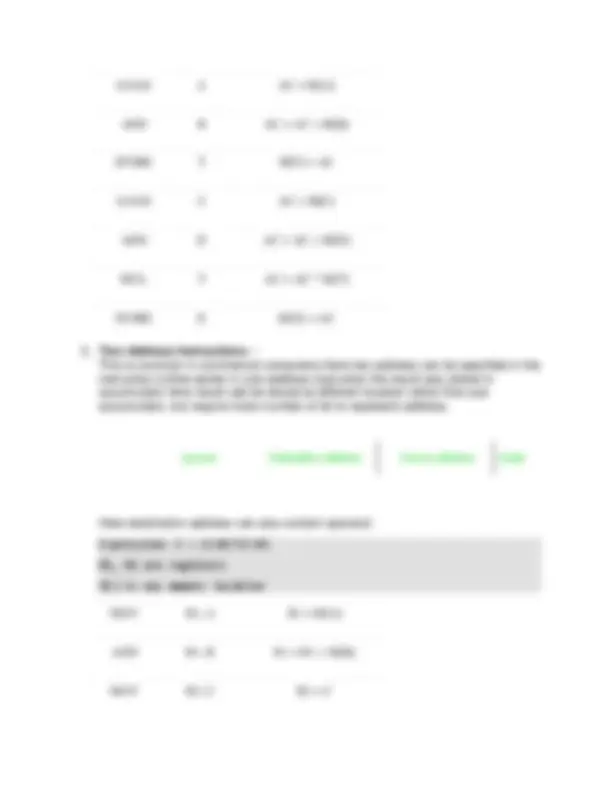
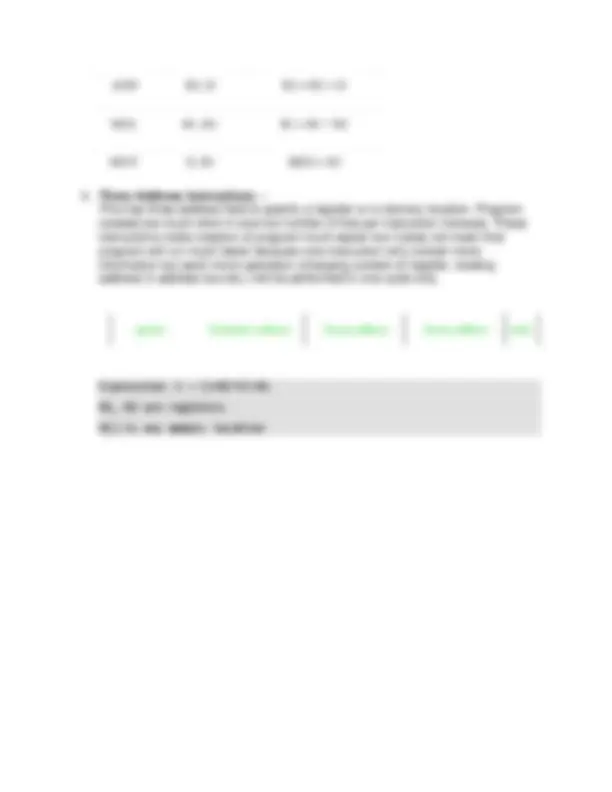
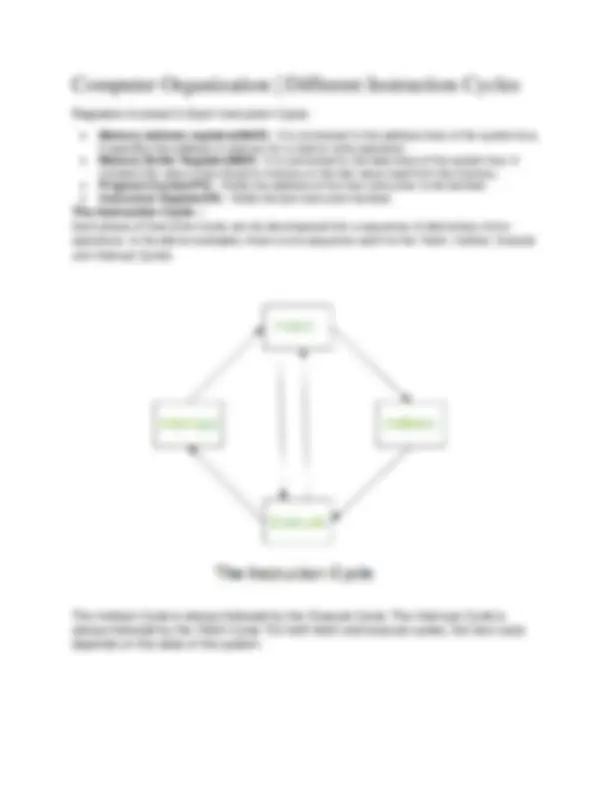
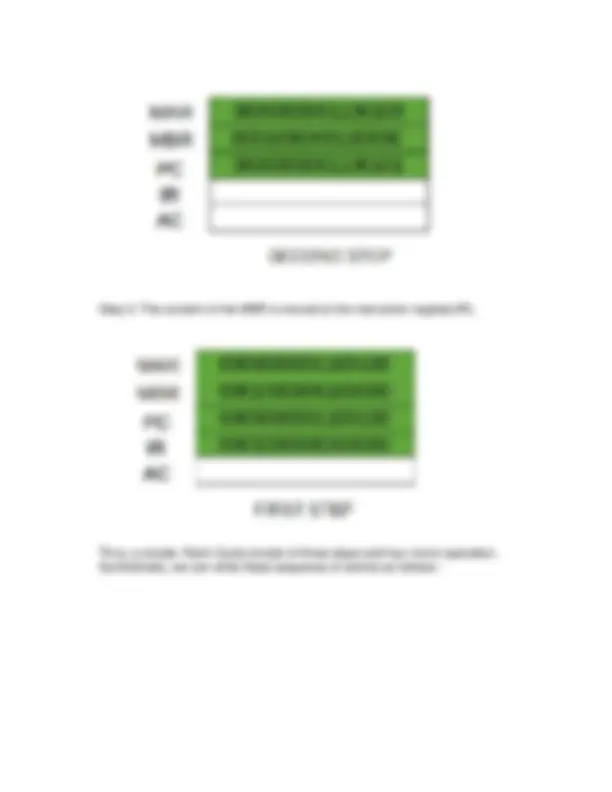
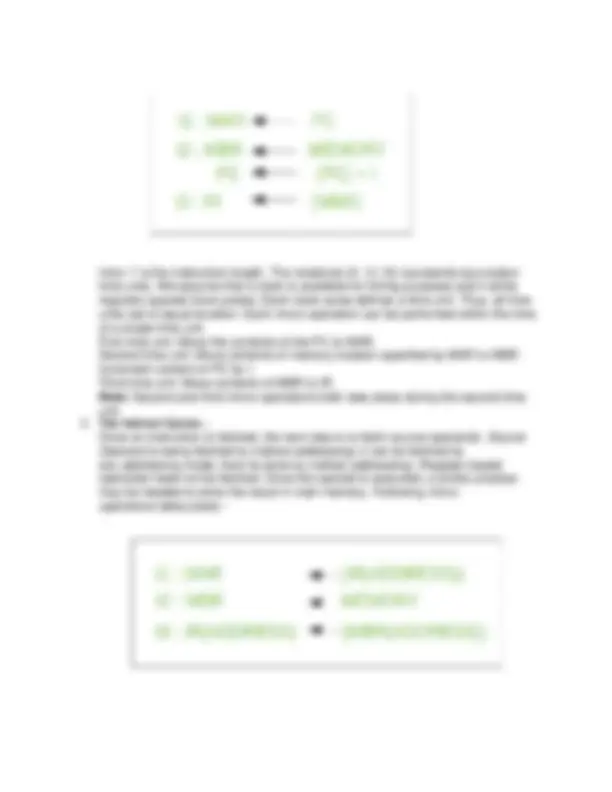
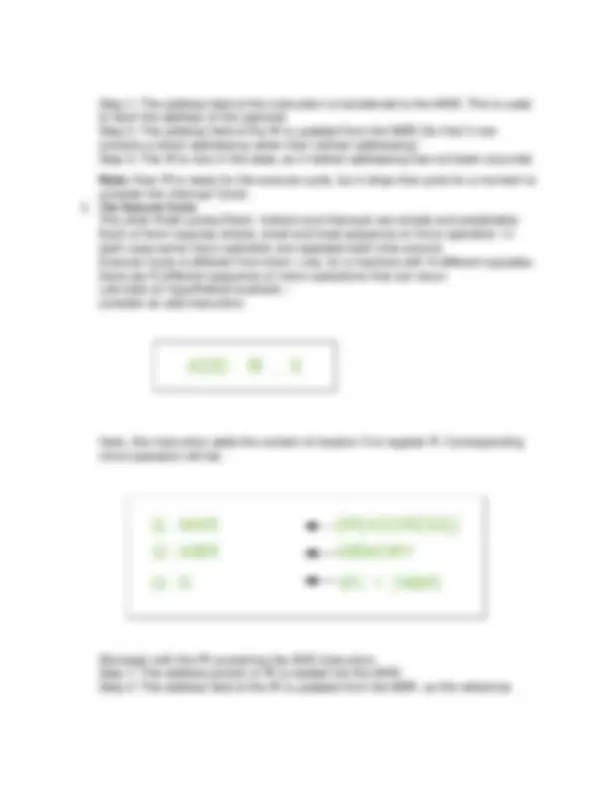
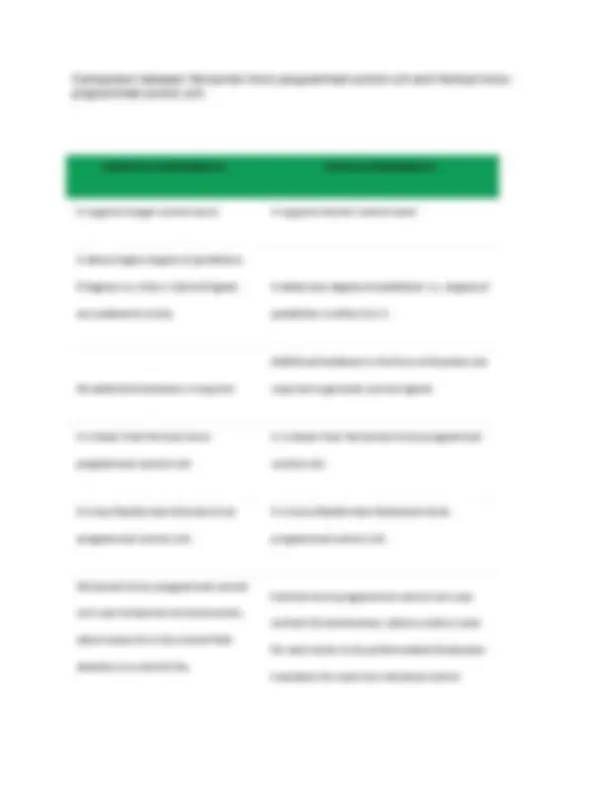
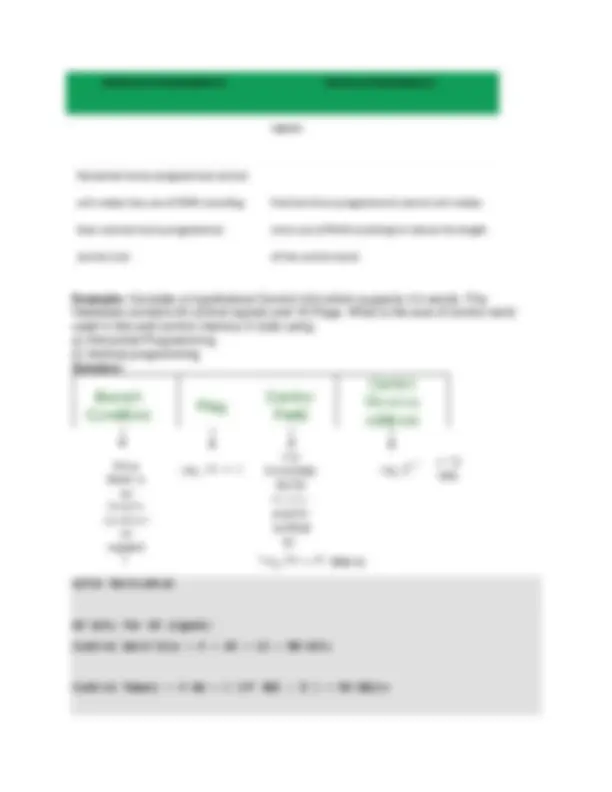

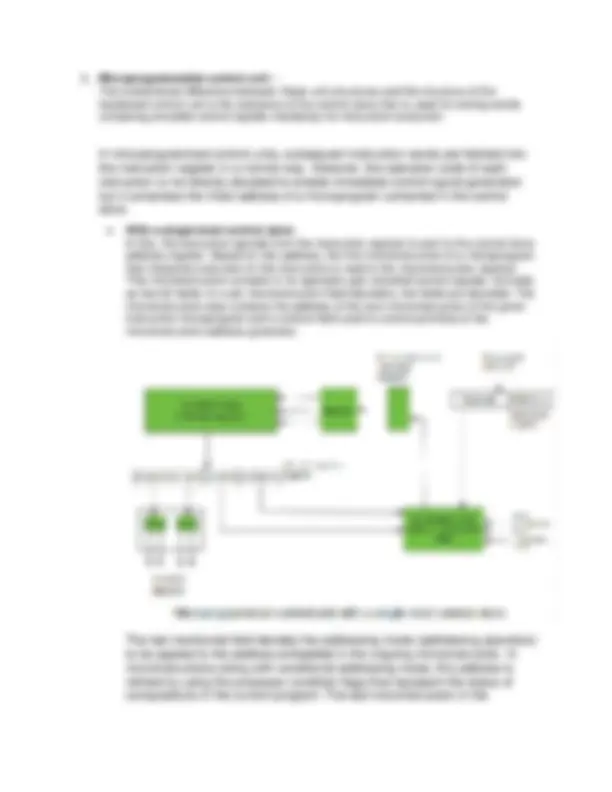
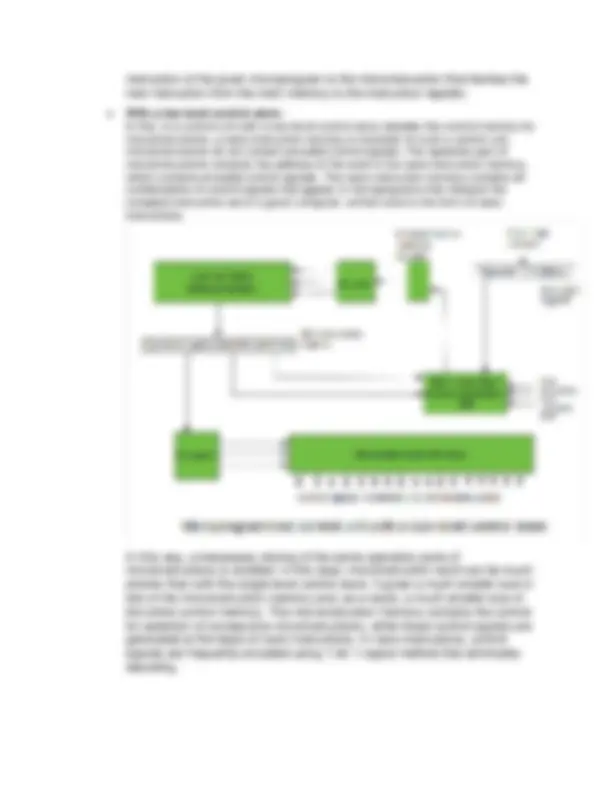
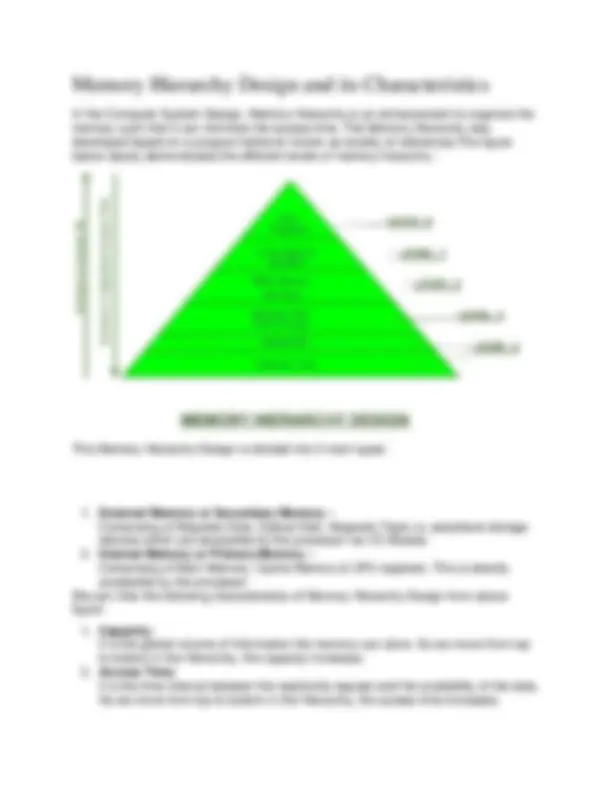
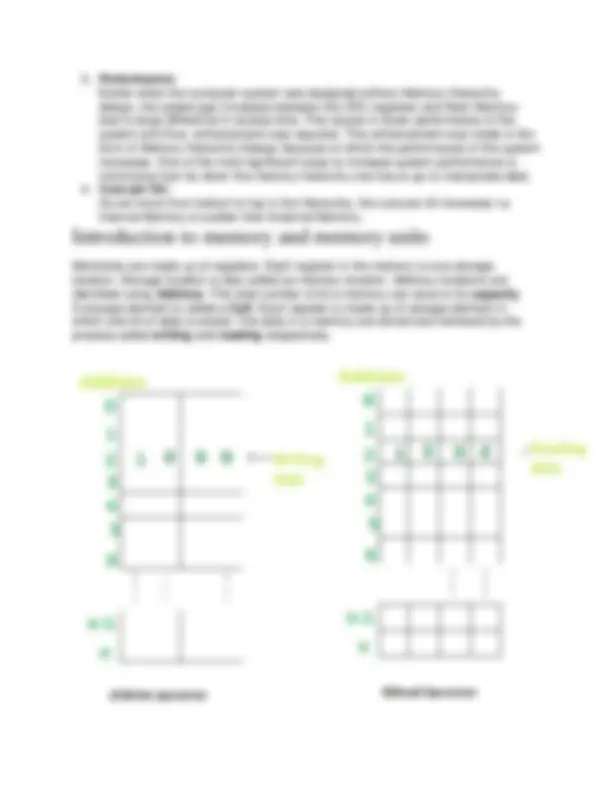
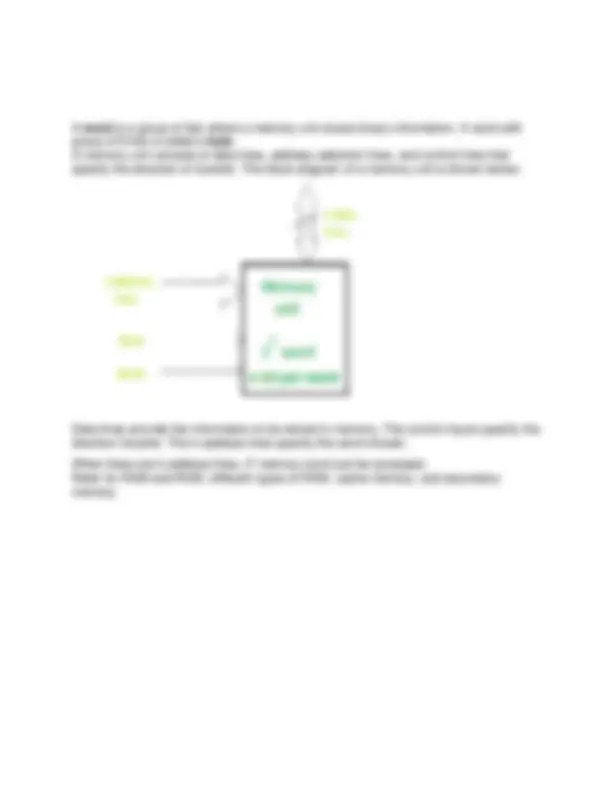
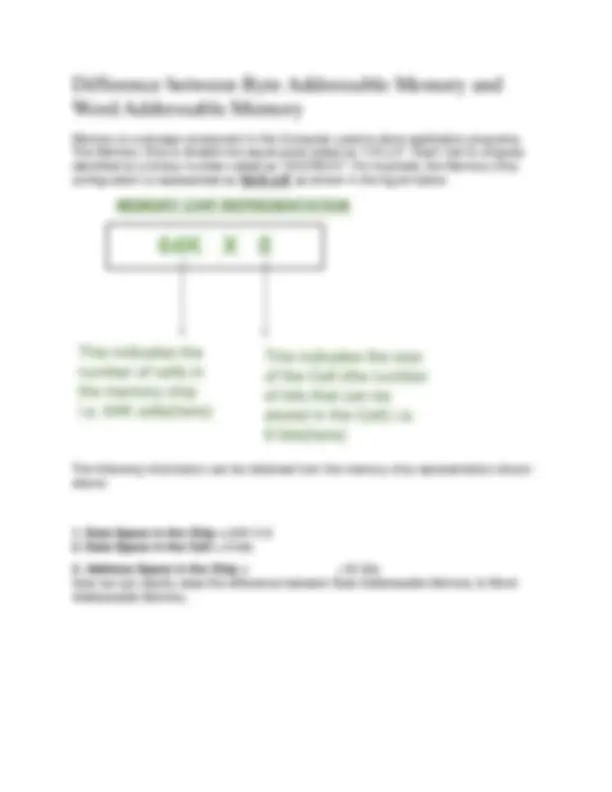
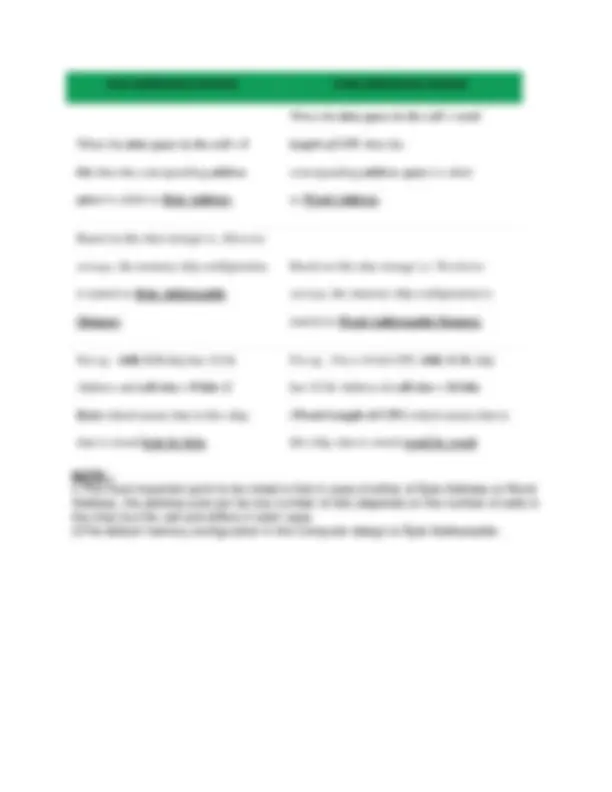
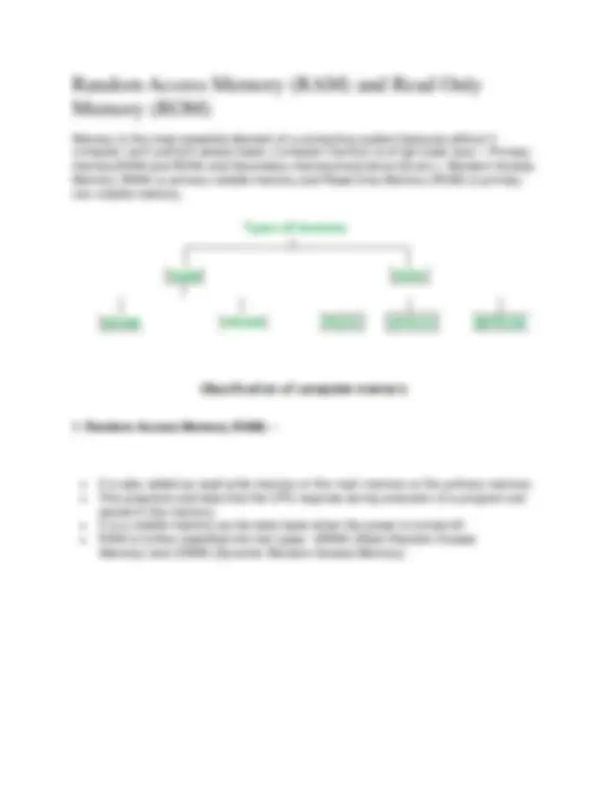
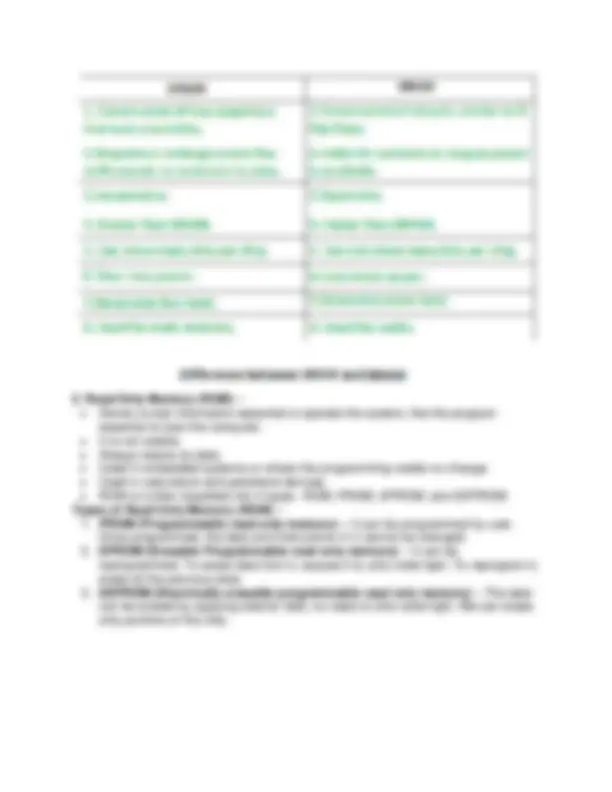
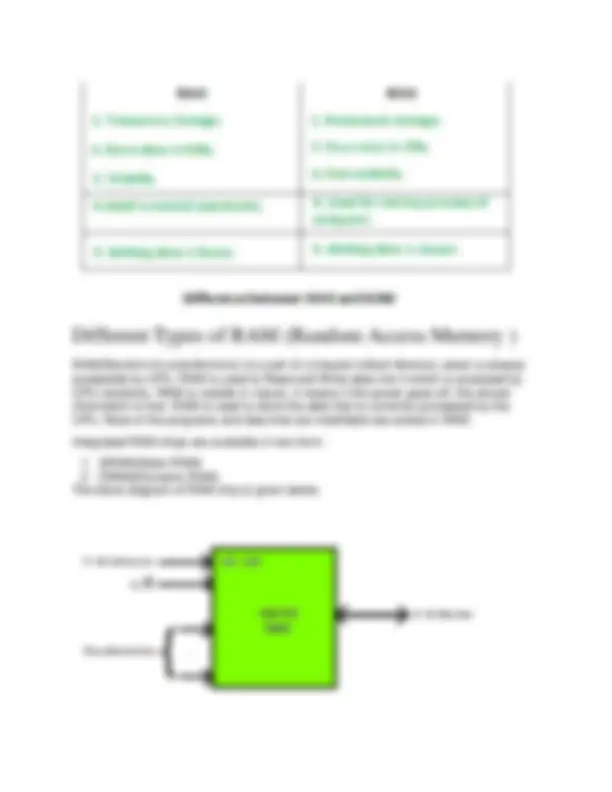
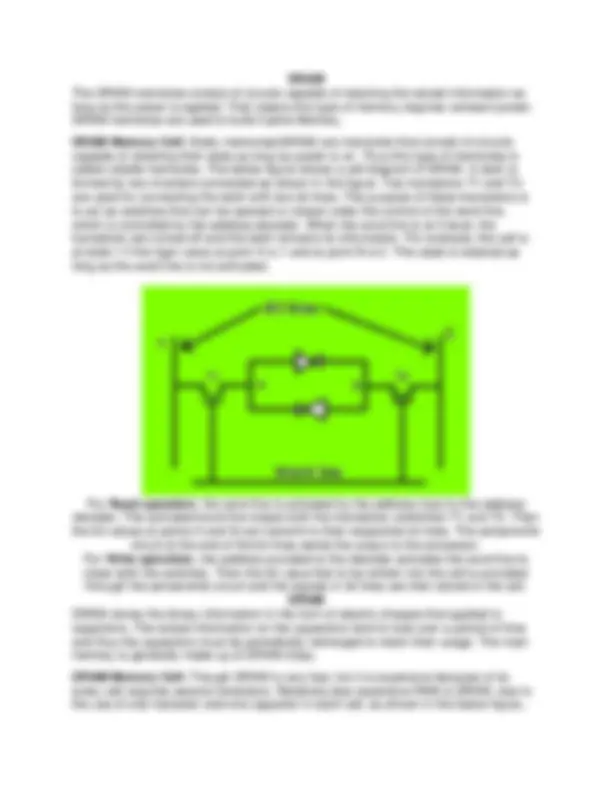
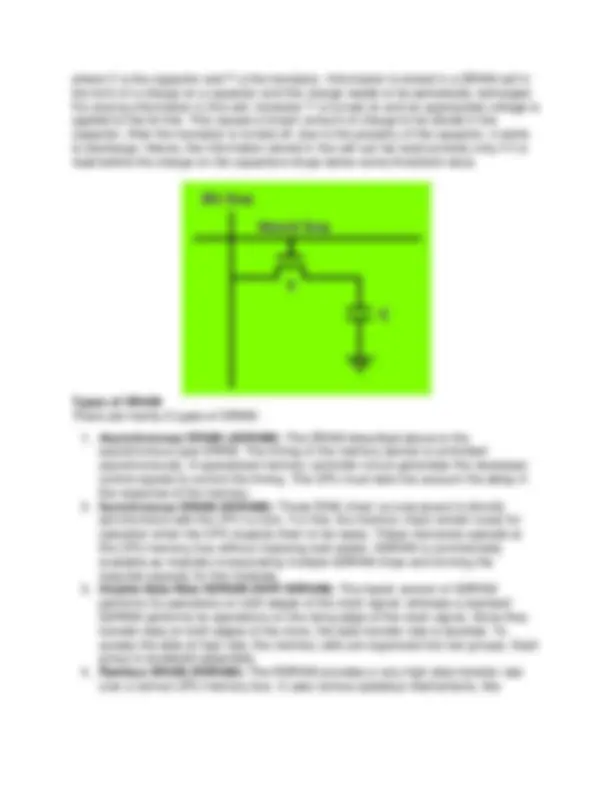
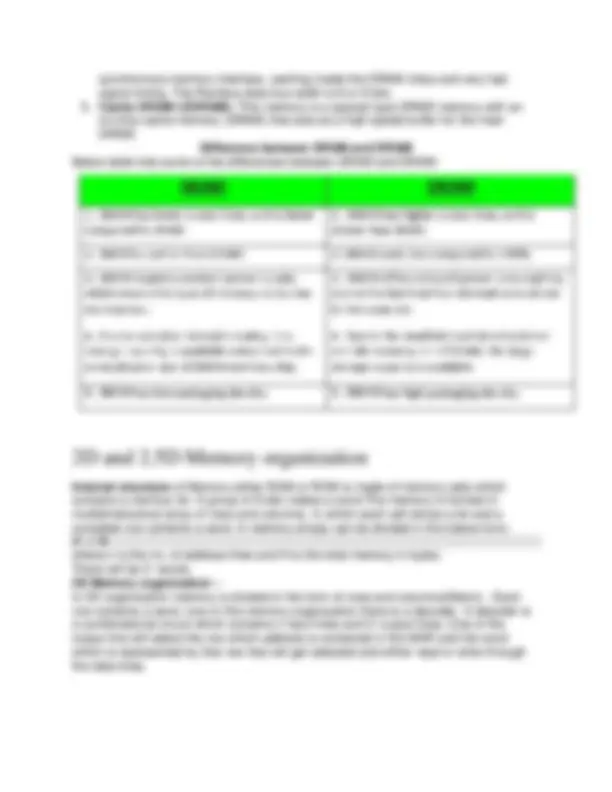
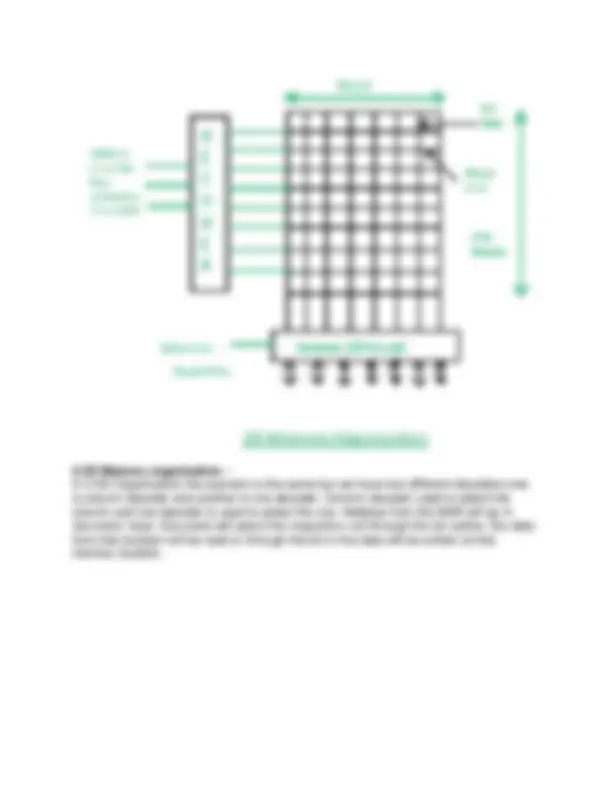
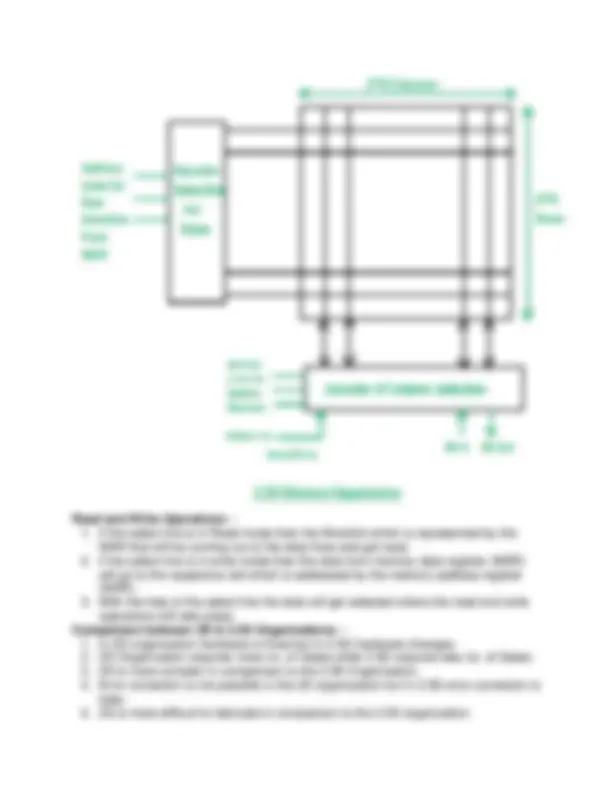
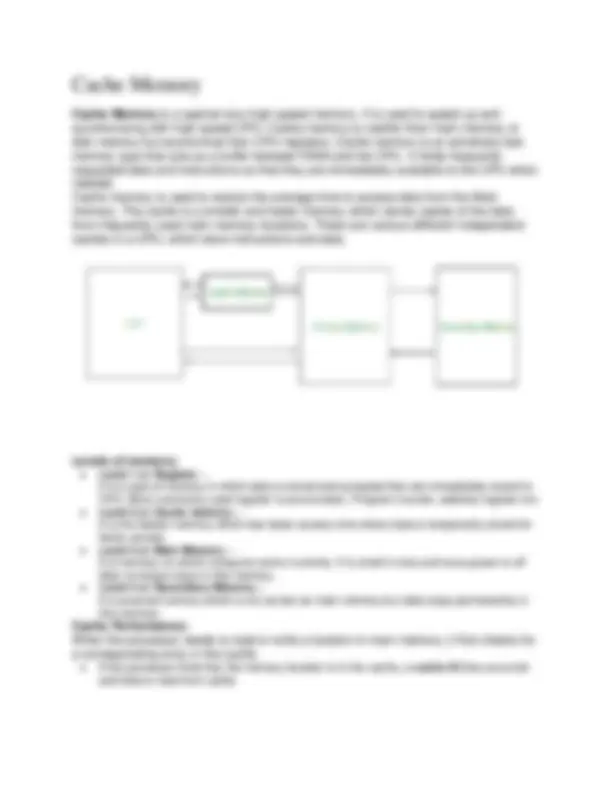
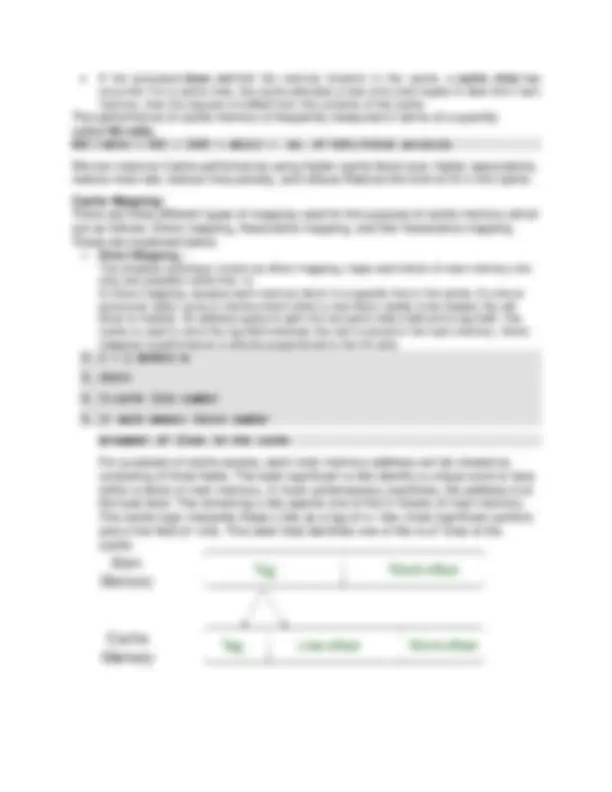
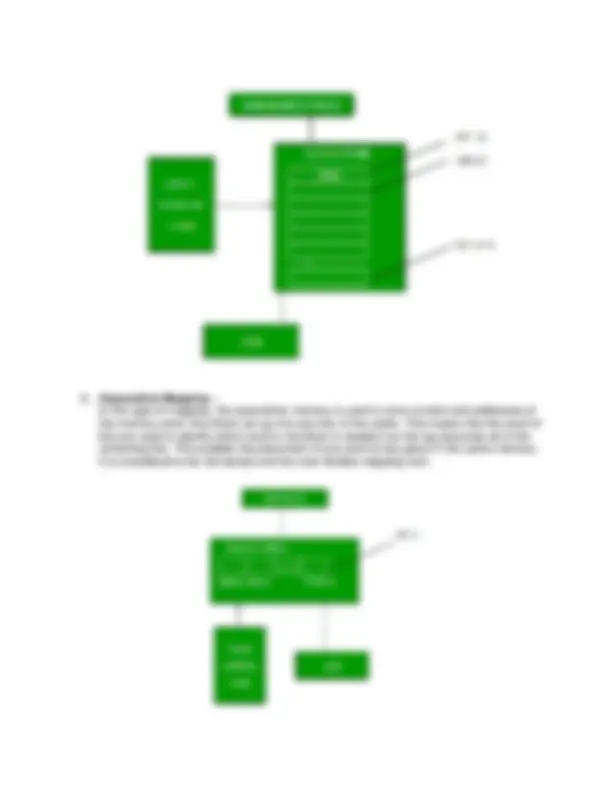
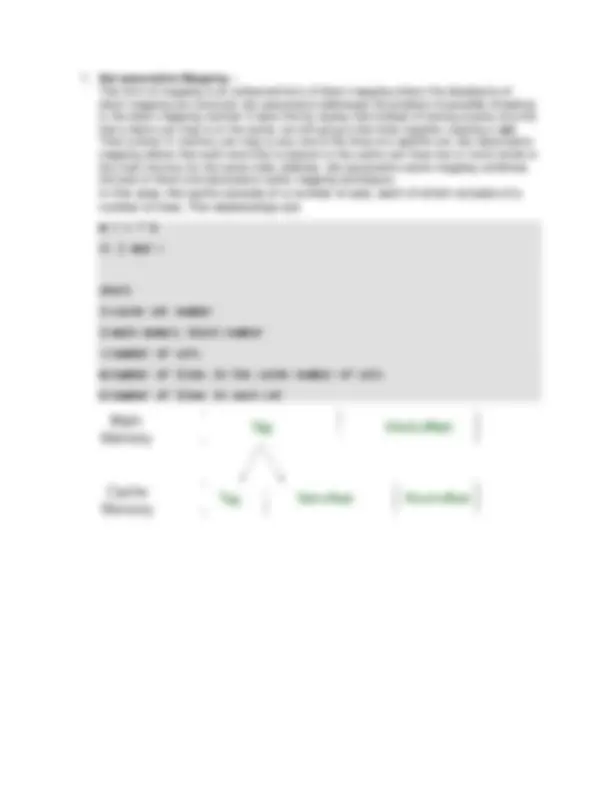
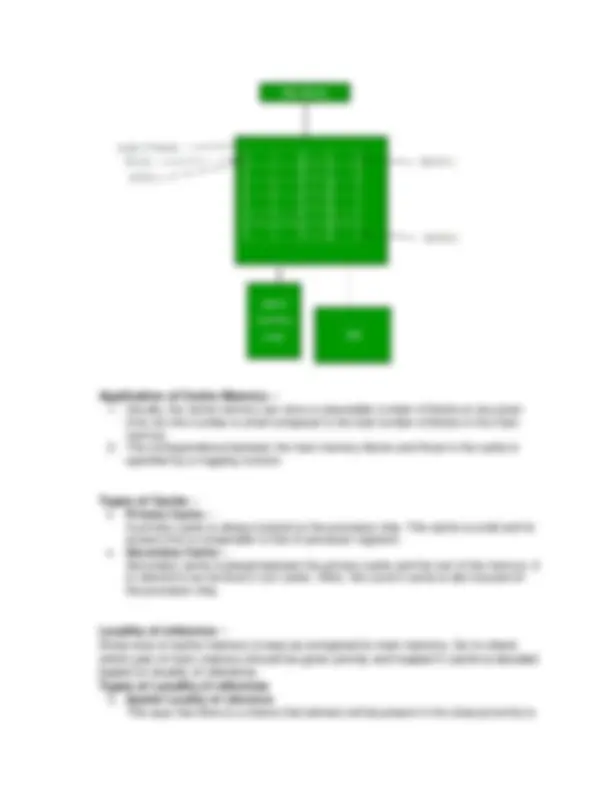
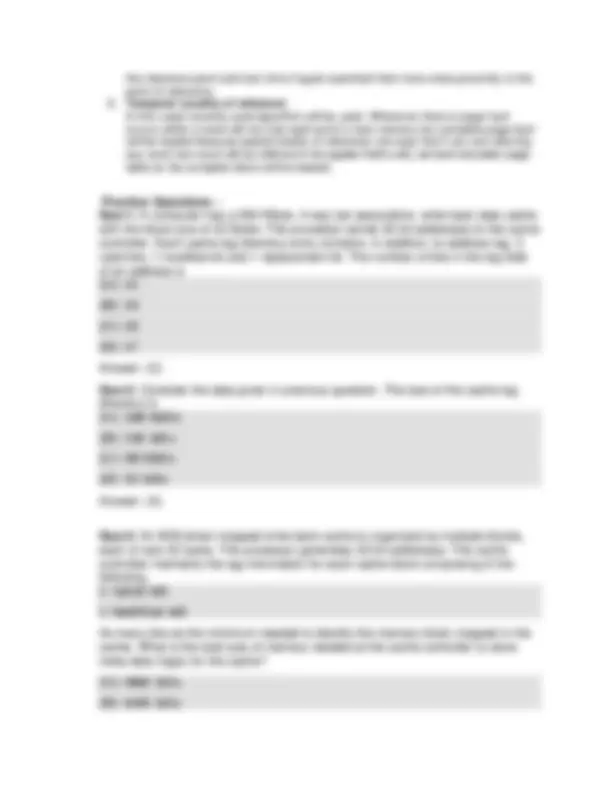
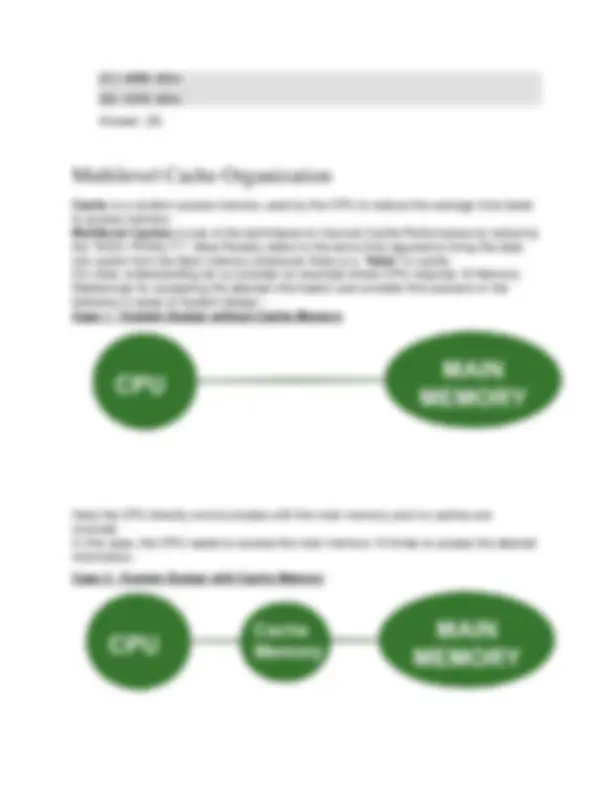
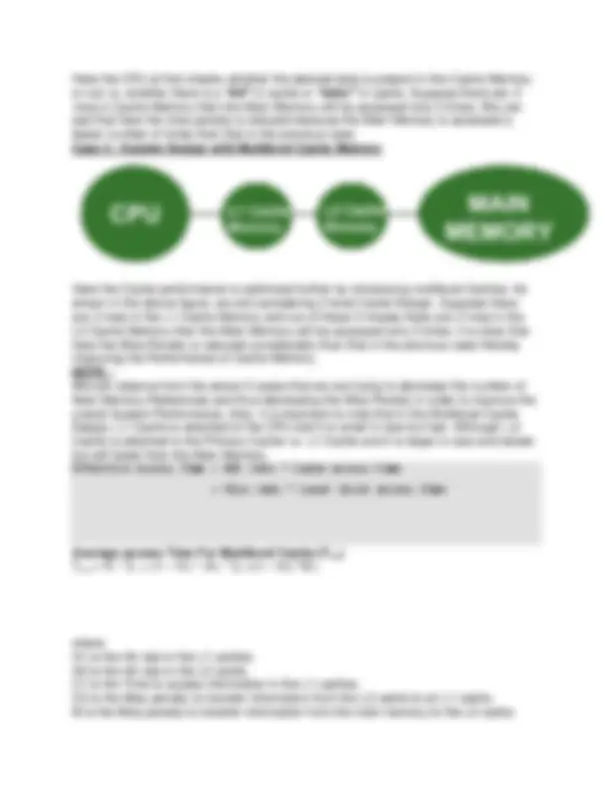
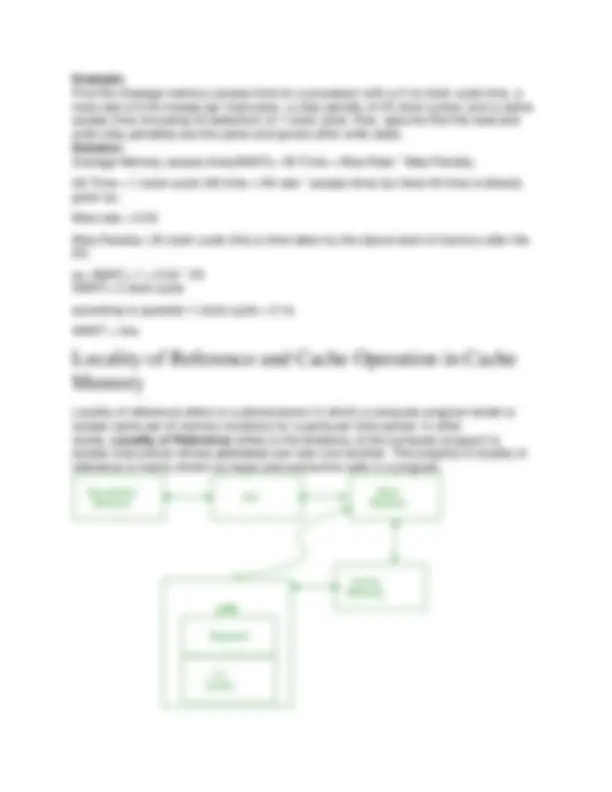
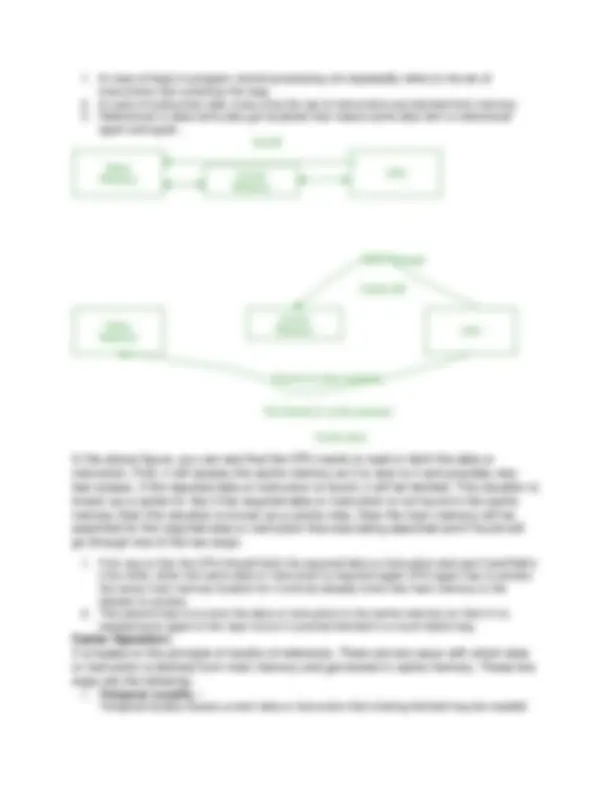
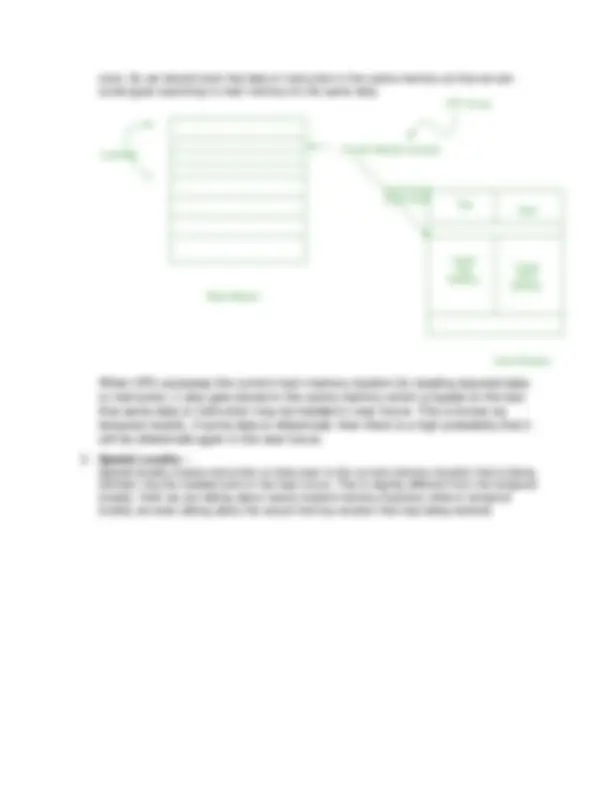
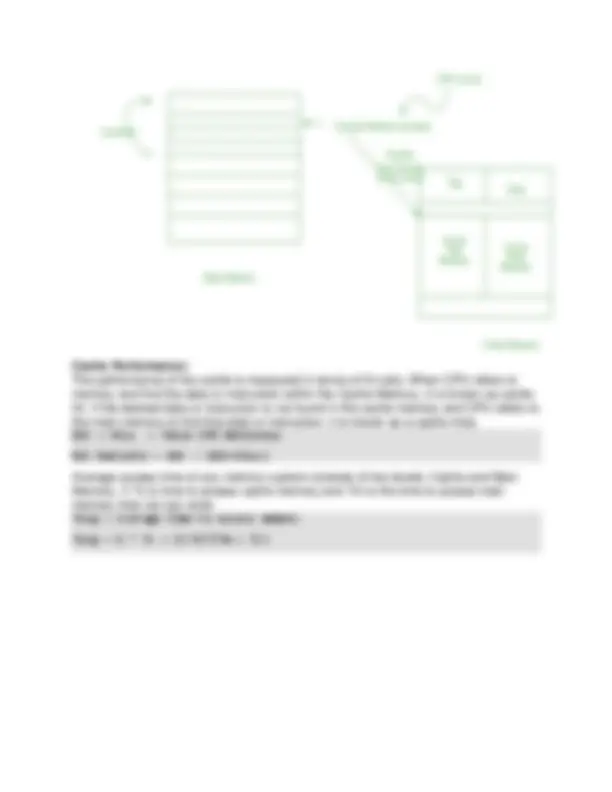


Study with the several resources on Docsity

Earn points by helping other students or get them with a premium plan


Prepare for your exams
Study with the several resources on Docsity

Earn points to download
Earn points by helping other students or get them with a premium plan
Community
Ask the community for help and clear up your study doubts
Discover the best universities in your country according to Docsity users
Free resources
Download our free guides on studying techniques, anxiety management strategies, and thesis advice from Docsity tutors
The different types of computer instruction formats and CPU organizations based on the number of address fields. It also describes the different registers involved in each instruction cycle and the sequence of micro-operations in each cycle. The document also discusses the difference between horizontal and vertical micro-programmed control units.
Typology: Cheat Sheet
1 / 44

This page cannot be seen from the preview
Don't miss anything!





































Computer perform task on the basis of instruction provided. A instruction in computer comprises of groups called fields. These field contains different information as for computers every thing is in 0 and 1 so each field has different significance on the basis of which a CPU decide what so perform. The most common fields are:
Operation field which specifies the operation to be performed like addition. Address field which contain the location of operand, i.e., register or memory location. Mode field which specifies how operand is to be founded. A instruction is of various length depending upon the number of addresses it contain. Generally CPU organization are of three types on the basis of number of address fields:
On the basis of number of address instruction are classified as:
Note that we will use X = (A+B)*(C+D) expression to showcase the procedure.
A stack based computer do not use address field in instruction.To evaluate a expression first it is converted to revere Polish Notation i.e. Post fix Notation.
Expression: X = (A+B)(C+D) Postfixed : X = AB+CD+ TOP means top of stack M[X] is any memory location
PUSH A TOP = A
Expression: X = (A+B)*(C+D) AC is accumulator M[] is any memory location M[T] is temporary location
Expression: X = (A+B)*(C+D) R1, R2 are registers M[] is any memory location
Registers Involved In Each Instruction Cycle:
Memory address registers(MAR) : It is connected to the address lines of the system bus. It specifies the address in memory for a read or write operation. Memory Buffer Register(MBR) : It is connected to the data lines of the system bus. It contains the value to be stored in memory or the last value read from the memory. Program Counter(PC) : Holds the address of the next instruction to be fetched. Instruction Register(IR) : Holds the last instruction fetched. The Instruction Cycle – Each phase of Instruction Cycle can be decomposed into a sequence of elementary micro- operations. In the above examples, there is one sequence each for the Fetch, Indirect, Execute and Interrupt Cycles.
The Indirect Cycle is always followed by the Execute Cycle. The Interrupt Cycle is always followed by the Fetch Cycle. For both fetch and execute cycles, the next cycle depends on the state of the system.
Step 1: The address in the program counter is moved to the memory address register(MAR), as this is the only register which is connected to address lines of the system bus.
Step 2: The address in MAR is placed on the address bus, now the control unit issues a READ command on the control bus, and the result appears on the data bus and is then copied into the memory buffer register(MBR). Program counter is incremented by one, to get ready for the next instruction.(These two action can be performed simultaneously to save time)
Step 3: The content of the MBR is moved to the instruction register(IR).
Thus, a simple Fetch Cycle consist of three steps and four micro-operation. Symbolically, we can write these sequence of events as follows:-
Step 1: The address field of the instruction is transferred to the MAR. This is used to fetch the address of the operand. Step 2: The address field of the IR is updated from the MBR.(So that it now contains a direct addressing rather than indirect addressing) Step 3: The IR is now in the state, as if indirect addressing has not been occurred. Note: Now IR is ready for the execute cycle, but it skips that cycle for a moment to consider the Interrupt Cycle.
Here, this instruction adds the content of location X to register R. Corresponding micro-operation will be:-
We begin with the IR containing the ADD instruction. Step 1: The address portion of IR is loaded into the MAR. Step 2: The address field of the IR is updated from the MBR, so the reference
memory location is read. Step 3: Now, the contents of R and MBR are added by the ALU. Lets take a complex example :-
Here, the content of location X is incremented by 1. If the result is 0, the next instruction will be skipped. Corresponding sequence of micro-operation will be :-
Here, the PC is incremented if (MBR) = 0. This test (is MBR equal to zero or not) and action (PC is incremented by 1) can be implemented as one micro-operation. Note : This test and action micro-operation can be performed during the same time unit during which the updated value MBR is stored back to memory.
Comparison between Horizontal micro-programmed control unit and Vertical micro- programmed control unit:
HORIZONTAL Μ-PROGRAMMED CU VERTICAL Μ-PROGRAMMED CU
It supports longer control word. It supports shorter control word.
It allows higher degree of parallelism.
If degree is n, then n Control Signals
are enabled at a time.
It allows low degree of parallelism i.e., degree of
parallelism is either 0 or 1.
No additional hardware is required.
Additional hardware in the form of decoders are
required to generate control signals.
It is faster than Vertical micro-
programmed control unit.
it is slower than Horizontal micro-programmed
control unit.
It is less flexible than Vertical micro-
programmed control unit.
It is more flexible than Horizontal micro-
programmed control unit.
Horizontal micro-programmed control
unit uses horizontal microinstruction,
where every bit in the control field
attaches to a control line.
Vertical micro-programmed control unit uses
vertical microinstruction, where a code is used
for each action to be performedand thedecoder
translates this code into individual control
HORIZONTAL Μ-PROGRAMMED CU VERTICAL Μ-PROGRAMMED CU
signals.
Horizontal micro-programmed control
unit makes less use of ROM encoding
than vertical micro-programmed
control unit.
Vertical micro-programmed control unit makes
more use of ROM encoding to reduce the length
of the control word.
Example: Consider a hypothetical Control Unit which supports 4 k words. The Hardware contains 64 control signals and 16 Flags. What is the size of control word used in bits and control memory in byte using: a) Horizontal Programming b) Vertical programming Solution:
a)For Horizontal
64 bits for 64 signals
Control Word Size = 4 + 64 + 12 = 80 bits
Control Memory = 4 kW = ( (4* 80) / 8 ) = 40 kByte
Functions of the Control Unit –
Control signals for an instruction execution have to be generated not in a single time point but during the entire time interval that corresponds to the instruction execution cycle. Following the structure of this cycle, the suitable sequence of internal states is organized in the control unit.
A number of signals generated by the control signal generator matrix are sent back to inputs of the next control state generator matrix. This matrix combines these signals with the timing signals, which are generated by the timing unit based on the rectangular patterns usually supplied by the quartz generator. When a new instruction arrives at the control unit, the control units is in the initial state of new instruction fetching. Instruction decoding allows the control unit enters the first state relating execution of the new instruction, which lasts as long as the timing signals and other input signals as flags and state information of the computer remain unaltered. A change of any of the earlier mentioned signals stimulates the change of the control unit state.
This causes that a new respective input is generated for the control signal generator matrix. When an external signal appears, (e.g. an interrupt) the control unit takes entry into a next control state that is the state concerned with the reaction to this external signal (e.g. interrupt processing). The values of flags and state variables of the computer are used to select suitable states for the instruction execution cycle.
The last states in the cycle are control states that commence fetching the next instruction of the program: sending the program counter content to the main memory address buffer register and next, reading the instruction word to the instruction register of computer. When the ongoing instruction is the stop instruction that ends program execution, the control unit enters an operating system state, in which it waits for a next user directive.
instruction of the given microprogram is the microinstruction that fetches the next instruction from the main memory to the instruction register.
With a two-level control store: In this, in a control unit with a two-level control store, besides the control memory for microinstructions, a nano-instruction memory is included. In such a control unit, microinstructions do not contain encoded control signals. The operation part of microinstructions contains the address of the word in the nano-instruction memory, which contains encoded control signals. The nano-instruction memory contains all combinations of control signals that appear in microprograms that interpret the complete instruction set of a given computer, written once in the form of nano- instructions.
In this way, unnecessary storing of the same operation parts of microinstructions is avoided. In this case, microinstruction word can be much shorter than with the single level control store. It gives a much smaller size in bits of the microinstruction memory and, as a result, a much smaller size of the entire control memory. The microinstruction memory contains the control for selection of consecutive microinstructions, while those control signals are generated at the basis of nano-instructions. In nano-instructions, control signals are frequently encoded using 1 bit/ 1 signal method that eliminates decoding.
In the Computer System Design, Memory Hierarchy is an enhancement to organize the memory such that it can minimize the access time. The Memory Hierarchy was developed based on a program behavior known as locality of references.The figure below clearly demonstrates the different levels of memory hierarchy :
This Memory Hierarchy Design is divided into 2 main types: